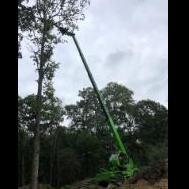Hey what a great thread thanks!
I teach CS 30/31 overseas in Bermuda as a Lantra instructor, one of the only international Lantra / NPTC outposts.
I regularly mix up the speak / demo / practice teaching styles. I do believe we need to stop calling the technical/vocational learners 'not academic'...what they learn and practice is APPLIED academics as opposed to the mearly abstract. All our learners must grasp quite complicated concepts and must be able to visualize outcomes they need to produce and they must be able to produce them properly for the outcome to not kill them sometimes!
I find when it comes to learning 'differences' and difficulties that the biggest stumbling block comes when interpreting chain ID charts. Sorting out the various 3/8"s and 3/8P, and multiple choices for .325 etc. etc. If someone has dyslexia, I would imagine that could be very difficult!
For chain component ID and sharpening I have a set of those way oversize chain components that Oregon makes as teaching aids. MAkes a big difference! I also have cut up cylinders and heat sized pistons for examples, along with a load of mashed up bars, wrecked pawls, bearings and sprockets. The more you show, the better!
One of my last group mentioned that a DVD would be useful at the start of the course, just to give an overview of things.
I admit I've never asked about dyslexia, I more often get people who's first language is not English, so it doesn't matter if they can read or not, if they can't read English well! We have so far managed to get by, demonstrate, imitate, 1:1 practice...I often say when it comes to their NPTC assessment, don't worry if you can't remember the name of something, describe what it does!
When I practice mock assessments if some bright spark reels off all the correct names of chain components, I'll check them by asking them, right, so what does it do, or what function does it serve?
Thanks for your cartoon BTW, I'll use it next time and let you know what the group thinks.





